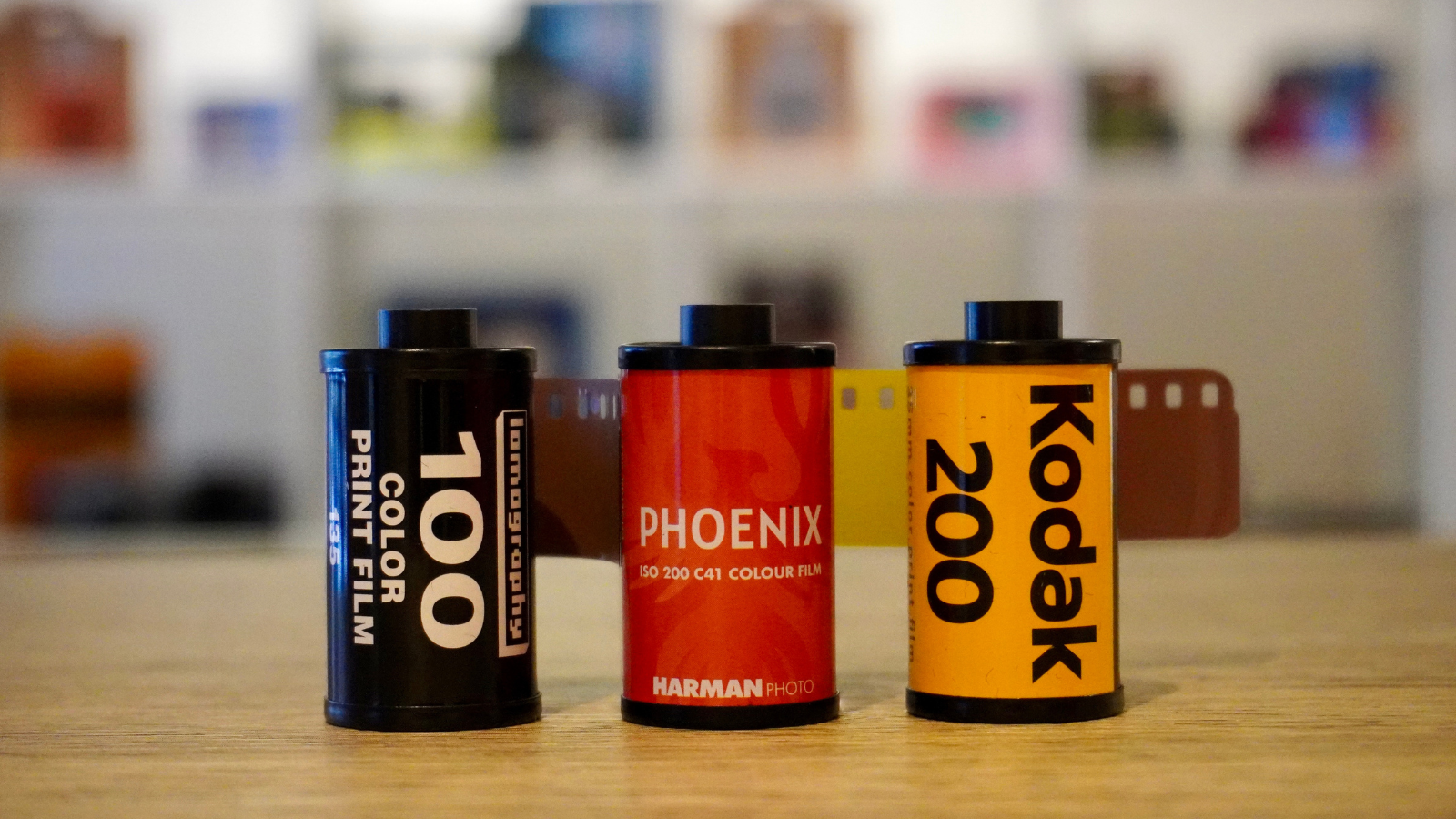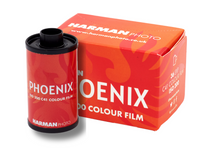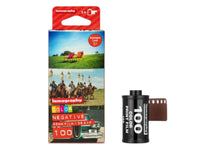Black Friday 2025 has landed at Analogue Wonderland, bringing some of our biggest film photography deals of the year - from discounted film and cameras to money-saving WonderLab processing offers, exclusive bundles, and festive specials available for a limited time only. Grab a great deal while stocks last!
Recent posts
Shop the article

Harman Phoenix Vs Kodak Gold Vs Lomography CN100 - What You Can Expect
By Amy Farrer
In an incredibly exciting milestone, HARMAN Technology has successfully produced the UK’s first colour film at its facility in Mobberley, Cheshire - introducing Phoenix 35mm and Phoenix 120 film. Despite the established dominance of industry giants such as Kodak in the colour film market, players like Lomography, Dubblefilm, and CineStill are making their mark with their creative film stocks. And so the question arises: Where does HARMAN Phoenix sit within this competitive landscape?
Sundari and Amy set out to explore how HARMAN Phoenix measures up against two of the community’s favourite film stocks, Kodak Gold 200 and Lomography Colour Negative 100, and to determine which subjects bring the best out in each film.
What to expect from HARMAN Phoenix
HARMAN Phoenix, a fresh addition to the world of colour negative films with a 200 ISO rating, hails from the creators of renowned black and white film stocks, Ilford and Kentmere. Boasting high-contrast and vibrant colour reproduction alongside some distinctive analogue attributes such as halation and speckles, we are truly excited to share the magic of Phoenix with you.
As a colour-first film, HARMAN Phoenix proves to be an excellent option for capturing dynamic scenes filled with intricate details. So it could well become the go-to ISO 200 film when you’re seeking an extra touch of pizazz. But remember, this is an experimental film designed to yield creative effects, so take a moment to relish the process and anticipate the thrilling moment when you lay hands on your first set of negatives and digital scans from our WonderLab!
What we know about Kodak Gold 200
Kodak Gold 200 consistently emerges as top choice when it comes to the film community’s preferred colour film stock. Serving as a staple colour film with an ISO of 200, it proves ideal for well-lit scenarios. Similar to many of Kodak's colour film offerings, it boasts excellent natural colour and skin tone reproduction, establishing it as a favoured option for both portrait and landscape photography. It also carries a subtle vintage feel that evokes a sense of nostalgia, setting it apart from its sibling films. This characteristic makes it a great option for those in search of a genuine analogue experience and a typical 90s look.
What we know about Lomography Colour Negative 100
Lomography, celebrated for their vibrant array of films, presents an excellent option for infusing vitality into your analogue images. Among their offerings, the Lomography Colour Negative 100 stands out - a daylight-balanced film that boasts opulent colour saturation and feeds off lots of light. This film has a well-balanced colour representation across the spectrum without favouritism for any specific colour palette.
Methodology for comparing the films
To create an accurate and useful comparison for you, we shot the three rolls in as consistent a manner as possible:
- Using three Canon AE-1 film cameras with identical 50mm 1.8 lenses
- Replicating the same exposure readings for every shot on every film
- Using three 36 exposure colour films at a similar ISO (with a one-stop push for the Lomography 100 to compensate for its slower ISO)
- Ensuring uniform composition and shooting under consistent lighting conditions
So, now we’ve established the groundwork and painted the backdrop, the question is: how do these three films compare when capturing a variety of subjects?
Portraiture

Metered at 1/1000 f5.6

Metered at 1/500 f4

Metered at 1/500 f2.8
When venturing into portrait photography, the selection of your film stock plays a pivotal role in capturing diverse skin tones - all dependent on your desired outcome, of course. As we know, and as it is clear here, Kodak Gold has good colour reproduction and excels in capturing true-to-life skin tones. Conversely, Lomography 100 injects a burst of vibrancy, while Phoenix introduces a subtle touch of halation, emphasising the enhancement of warm tones.
Still Life

Metered at 1/60 f2
Just look at the difference in each of those colours! Despite the lack of light, this was one of Sundari’s favourite images on Phoenix as it has a whimsical, vintage ambience. She encourages others not to shy away from shooting the new film in low light and to simply give it a go. This is a fun example of Phoenix's unique colour portrayal.
Landscape
 Metered at 1/500 f5.6
Metered at 1/500 f5.6
Metered at 1/60 f2.8
This scene instantly caught our attention as a great way to demonstrate the disparities in how each film captures the three primary colours - blue, red, and green. The warmth radiating from the autumn trees on HARMAN Phoenix is undeniable, though up against the vibrant blue sky showcased on Gold 200 and Lomography 100. If you look closely, you might even spot a pop of halation on Phoenix, too!
Street

Metered at 1/250 f2.8
 Metered at 1/250 f4
Metered at 1/250 f4
There’s a few interesting distinctions worth noting among these three film stocks in this scene when it comes to colour representation and the contrast between highlights and shadows. HARMAN Phoenix particularly stands out for its punchy vibrancy and stark contrast. It also creates a touch of halation to the ceiling lights and distant beams, enhancing its visual impact.
Closeups

Metered at 1/250 f2.8

A notable strength of Phoenix lies in its ability to approach close subjects and capture intricate details within a bustling frame. Despite being a grainier film stock compared to others, this imparts a charming vintage quality to your images. The contrast between the vibrant flowers and the dark, deep green, shadow-heavy background truly accentuates the subject and adds to the shallow depth of field.
And so it begins…
As a new contender joins the competitive world of colour film, the anticipation builds to witness how the HARMAN Phoenix 35mm colour negative film will resonate with the film photography community. It is also now available in 120 format too! We genuinely hope you find the same appreciation for it as we do! No matter what you like to shoot, now you’ve gained additional insight into how this film performs across different scenarios, we hope this information gives you the confidence to excitingly incorporate it into your film photography journey. And now that the film has been out in the wild we also have our customer's first perspectives on Phoenix
Undoubtedly, you'll be eager to receive your initial set of images, too. Our WonderLab, having mastered the craft of developing and scanning this brand-new film alongside Harman, can bring your creations to life. So grab a roll (or three or five!), venture out, and discover the remarkable qualities that Phoenix has to offer.
You can follow the journey of the film on the HARMAN Photo website. Want to know more about HARMAN Phoenix? Visit our Phoenix Learning Hub for all you need to know ahead of shooting this new colour film from HARMAN!
Ready to dive in?
Keep Reading
View all
Christmas 2025: Shipping & Opening Hours
Christmas 2025 is fast approaching! To make sure your analogue goodies arrive in time, take note of our last shipping dates, plus opening and operating hours over the festive season. We've got everything you need to gift the magic of film photography this Christmas!

Film Photography Christmas Gift Guide 2025: Analogue Wonderland
Capture the magic of Christmas with film - no filters needed. Our 2025 Film Photography Christmas Gift Guide 2025 is packed with thoughtful presents for every type of shooter, from curious beginners to seasoned photographers. Discover film stocks, cameras, and creative accessories that will make this festive season truly memorable.
Subscribe to our newsletter 💌
Sign up for our newsletter to stay up to date on film photography news, sales and events:
Free Tracked Shipping
On all UK orders over £50
Passion For Film
An unbeatable range and an on-site lab
Our Customers Trust Us
Thousands of independent 5* reviews
All Deliveries are Carbon Neutral
Independently audited and verified by Planet
- Opens in a new window.








1 Comment -
Emily •
Hi, I’ve just bought this film and some of the reviews are suggesting to shoot at100/150 instead what would u recommend to keep it at 200 or put it at a slower iso ?